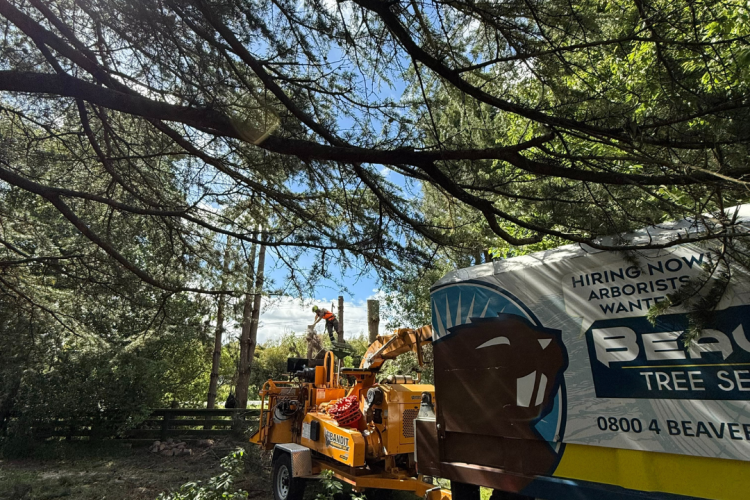June Tree Care

June Tree Care in New Zealand: What to Focus on This Winter
As winter settles in across New Zealand, it might seem like a quiet time for your garden. But June is actually an ideal month to take a closer look at your trees and carry out important seasonal maintenance. Cooler temperatures and dormant growth periods make this a prime time for pruning, planning, and checking for potential issues — especially as storms become more frequent in some regions.
At Beaver Tree Service, we believe in staying one step ahead when it comes to tree care. Here are some winter tasks we recommend focusing on during June, backed by guidance from the New Zealand Arboricultural Association (NZ Arb) and other trusted sources.
- Winter Is the Best Time for Pruning
Many trees go into dormancy during the colder months, particularly deciduous varieties like liquidambars, maples, and oaks. Pruning while a tree is dormant reduces stress on the plant and allows for better wound healing when growth resumes in spring. According to NZ Arb, winter pruning also helps arborists more clearly assess a tree’s structure, since the leaves are off and any weak or crossing branches are easier to spot.
Pruning during June can:
- Improve a tree’s overall shape and structure
- Remove dead or diseased branches
- Reduce the risk of breakage during winter storms
- Encourage healthy spring growth
However, improper pruning can do more harm than good. If you’re unsure how much to remove or where to cut, always call a qualified arborist.
- Check for Winter Hazards
High winds and heavy rain are common in many parts of New Zealand during June. Now is a good time to assess your trees for hazards such as:
- Cracks in branches or trunks
- Loose limbs
- Signs of rot or fungus at the base
- Leaning trees or exposed roots
These issues can increase the risk of trees falling or shedding limbs during a storm. If you notice anything concerning, it’s best to get a professional arborist to inspect the tree. Early intervention can prevent emergency situations down the track.
- Mulching and Soil Health
While growth slows in winter, roots remain active — especially in areas that don’t experience frost. Adding a layer of organic mulch around the base of your trees helps insulate roots, retain moisture, and suppress weeds. Just be sure to keep mulch away from the trunk itself to prevent rot.
- Plan Ahead
June is also a great time to plan ahead for new tree planting in late winter or early spring. If you’re thinking of adding new trees to your property, consider species that are well-suited to your soil and climate zone. The NZ Plant Conservation Network and your local council are good starting points for choosing native or eco-sourced options.
Final Thoughts
Tree care in winter is just as important as it is in spring or summer it’s simply a quieter kind of work. Pruning, inspecting for hazards, and preparing the soil all contribute to healthier, stronger trees come springtime.
If you’re not sure where to begin or want expert advice, get in touch with a qualified arborist. At Beaver Tree Service, we’re here to help New Zealanders care for their trees year-round — safely, professionally, and with the environment in mind.
